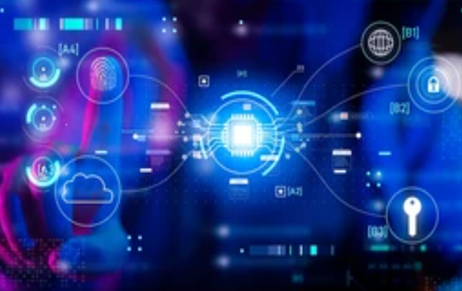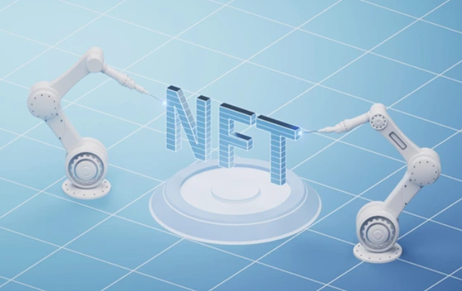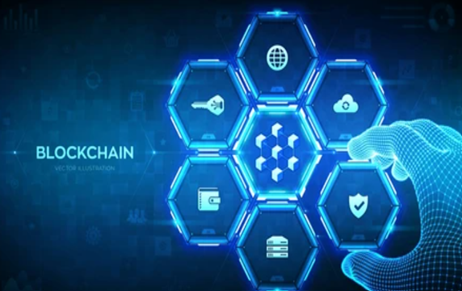There are few areas in the rapidly evolving domains of digital innovation and intellectual property…
Inter- Relation of Blockchain Technology and Intellectual Property Rights
ABSTRACT
Blockchain technology has gained much attention in recent years and is among the newest technologies. To preserve transparency, the author of this article will attempt to analyze the relationship between blockchain technology and intellectual property rights. Blockchain technology is one of the most transparent, safe, and reliable technologies available today. It investigates how blockchain technology is critical to safeguard the intellectual property rights of the legitimate, but on the other hand, there are specific challenges in applying this technology. The author makes specific recommendations to use this technology to protect intellectual property rights effectively.
INTRODUCTION
Newer ideas are emerging more quickly due to globalization and technological innovation, and people are registering more often to safeguard their intellectual property rights to preserve their original concepts, such as distinctive names, strategies, or software. However, as technology advances, the threat to intellectual property rights also grows.[1] People violate others’ rights to exploit them, so more substantial technology that guarantees greater transparency is required to prevent infringement.
Among these technologies is blockchain technology, a type of digital ledger that is highly safe and holds the details of every transaction. It creates a system or ledger that is impenetrable and unchangeable[2]. It is linked to a computer network, and all the data is digitally encrypted. It is widely employed in many fields, including voting systems, real estate, healthcare, and cryptocurrency.
Because of its many benefits, including being open-source, transparent, and secure, every transaction that has occurred is accessible to the general public, and there is no possibility of fraud.[3]. These factors have contributed to its success across a variety of industries.
Blockchain technology’s distinct features, such as its decentralisation and immutability, have the potential to significantly advance several industries, including manufacturing, education, healthcare, and finance.

Conversely, intellectual property encompasses intangible human cognition works, including inventions, literary and creative productions, designs, names, symbols, and pictures utilized in commercial contexts. It is used to obtain exclusive rights to various intangible assets, including one’s work and ideas, to prevent unauthorized usage. Intangibility, monopoly of rights, territoriality, and independence of rights are characteristics of intellectual property necessary for improved innovation or creative protection through better identification, planning, commercialization, and rendering.
PROTECTION OF INTELLECTUAL PROPERTY RIGHT BY USING BLOCKCHAIN TECHNOLOGY
There are several ways to use blockchain technology to safeguard intellectual property rights, some of which are listed below:
- A patent, trademark, copyright, and other intellectual property rights have different versions throughout their lifetimes. Each of these versions has a set protection period and is renewed after that. Blockchain technology is required to maintain the digital ledger of all the transactions to keep track of them.
- A smart contract, which is a type of digital document built on blockchain technology, is the second method. When all of the contract’s prerequisites are met, it is merely performed. There are several procedures involved in registering an intellectual property claim, and smart contracts can be a great solution to save time and effort.[4].
- It can be used as proof to establish who owns the assets and the title of the intellectual property-protected work. From invention to dissemination, all registered and unregistered intellectual property assets are tracked by the blockchain’s decentralized ledger.[5]. The time-stamped record and suitability aspects of blockchain technology will be useful in proving who created unregistered intellectual property.
- It can be used to detect IP items and things that are being counterfeited. Since the source, manufacturing process, production time and process, shipment, and movement of IP assets can all be confirmed on the blockchain, the rate of counterfeiting should drastically decrease when IP assets are registered on the blockchain.
ROLE OF INTELLECTUAL PROPERTY RIGHTS IN THE PROTECTION OF BLOCKCHAIN TECHNOLOGY
Copyright, patents, trademarks, and trade secrets laws all protect blockchain technology under intellectual property law. Since blockchain is a kind of computer software, copyright protection is applicable.[6]. It gives the authors or creators the authority to produce, distribute, assign, license, and do other things with the work. Although most blockchains are open, source codes used to create blockchain programs or apps may be copyright-protected.
Blockchain developers can get patents for their discoveries if they are novel, creative, and have the potential to be used in industry. An inventor should apply for patent protection in order to safeguard the software programs’ functionality.[7].
Blockchain developers can use trademarks to safeguard brand value and power since they protect unique names, logos, slogans, and other words or letter combinations used in relation to blockchain products or services. Trade secrets are a competitive advantage for blockchain developers, since they allow them to safeguard blockchain programs, algorithms, network configuration, data structures, and source code.
CHALLENGES
Despite its benefits in protecting intellectual property rights and vice versa, there are certain barriers to blockchain technology, one of which is a general lack of knowledge about the technology and its operation.
Experts and criminals alike may be drawn to the anonymous nature of blockchain technology. This is due to the network’s decentralized structure, which prevents anyone from knowing participants’ genuine identities. Because of this, bitcoins are utilized as money on the dark web and illicit markets. Additionally, there is a lack of standardization, which makes full utilization challenging.
SUGGESTIONS AND CONCLUSION
Increasing the general public’s knowledge and comprehension of blockchain technology is crucial, not just for IP specialists and stakeholders but also for the legal and judicial system as a whole.
In order to determine which jurisdiction and law should be applied in the event of a dispute involving the use of blockchain technology in relation to intellectual property rights, international organizations such as the World Intellectual Property Organisation should establish generally accepted guidelines for nations to adhere to.
Among the many advantages of blockchain technology is the ability to eliminate time-consuming and expensive disputes over the authorship of certain inventions. One useful technology development that can help IP offices with their daily operations is blockchain. However, the difficulties with blockchain technology must be addressed.
Author: Priyanka Gehlot , in case of any queries please contact/write back to us via email to [email protected] or at IIPRD.
REFERENCES
- Abou Naja, Revolutionizing Ownership- Blockchain Technology and Intellectual Property, (24 June 2024). https://abounaja.com/blog/blockchain-technology-and-intellectualproperty#:~:text=Real%2Dlife%20applications%20of%20the,wide%20adoption%2C%20jurisdictional%20challenges%20etc.
- P Singh & Anand Kumar Tripathi, Blockchain Technology and Intellectual Property Rights, Journal of Intellectual Property Rights, Vol. 24 (Jan. 2019). https://nopr.niscpr.res.in/bitstream/123456789/49934/1/JIPR%2024(1-2)%2041-44.pdf
- Narendra Kumar, Cryptocurrency, Intellectual Property Rights and Competition Law – Challenges and Implications, NLUA Journal of Intellectual Property Rights, Vol. 1. Issue1, July 2022. https://nluassam.ac.in/docs/Journals/IPR/vol1-issue-1/3.pdf
- Chiraj, Is Blockchain Intellectual Property Protection the Answer to Creators’ Copyright Problems, 2024. https://appinventiv.com/blog/blockchain-protecting-intellectual-property/
- Rabia Bajwa, Intellectual Property Blockchain Odyssey-Navigating Challenges and Seizing Opportunities, (10 October 2024). https://arxiv.org/html/2410.08359v1
- Nicolas Hohn- Hein, Securing IP Rights in Blockchain Technology, (28th 2021).
Author: Kaustubh Kumar, in case of any queries please contact/write back to us via email to [email protected] or at IIPRD.
[1] Abou Naja, Revolutionizing Ownership- Blockchain Technology and Intellectual Property, (24th Jun. 2024). https://abounaja.com/blog/blockchain-technology-and intellectualproperty#:~:text=Real%2Dlife%20applications%20of%20the,wide%20adoption%2C%20jurisdictional%20challenges%20etc.
[2] B. P Singh & Anand Kumar Tripathi, Blockchain Technology and Intellectual Property Rights, Journal of Intellectual Property Rights, Vol. 24 (Jan. 2019). https://nopr.niscpr.res.in/bitstream/123456789/49934/1/JIPR%2024(1-2)%2041-44.pdf
[3] Narendra Kumar, Cryptocurrency, Intellectual Property Rights and Competition Law – Challenges and Implications, NLUA Journal of Intellectual Property Rights, Vol. 1. Issue1, July 2022. https://nluassam.ac.in/docs/Journals/IPR/vol1-issue-1/3.pdf
[4] Chiraj, Is Blockchain Intellectual Property Protection the Answer to Creators’ Copyright Problems, Jun. 2024. https://appinventiv.com/blog/blockchain-protecting-intellectual-property/
[5] Rabia Bajwa, Intellectual Property Blockchain Odyssey-Navigating Challenges and Seizing Opportunities, (10th Oct. 2024). https://arxiv.org/html/2410.08359v1
[6] Nicolas Hohn-Hein, Securing IP Rights in Blockchain Technology, (28th Oct. 2021).



